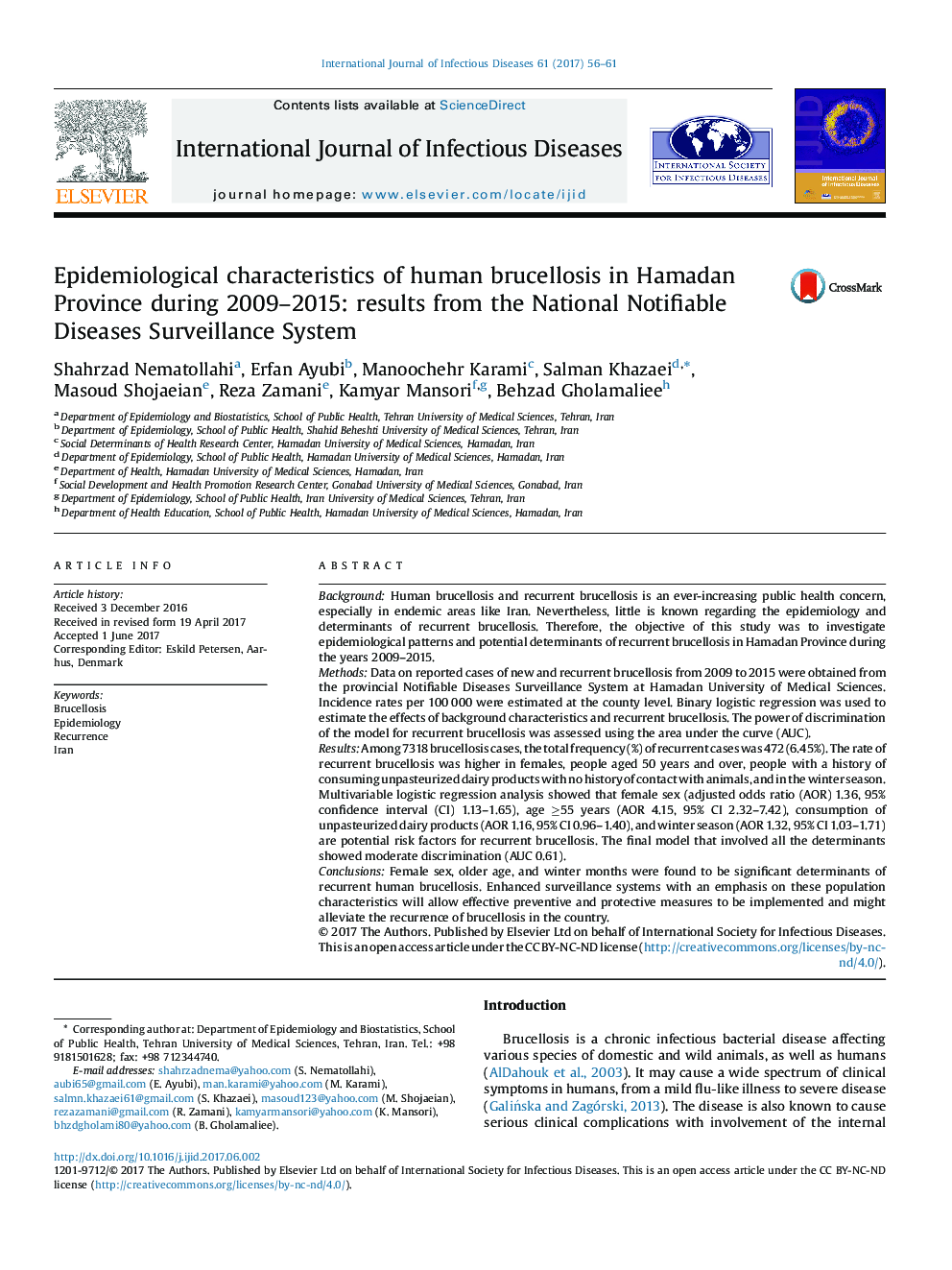| Article ID | Journal | Published Year | Pages | File Type |
|---|---|---|---|---|
| 5667387 | International Journal of Infectious Diseases | 2017 | 6 Pages |
â¢Brucellosis was found to more often affect males, those living in rural areas, and those in the economically active age groups.â¢Females, those of older ages, and the cold months are possible predisposing factors for recurrent human brucellosis in Hamadan Province.â¢The rate of brucellosis recurrence was found to increase positively with age.
BackgroundHuman brucellosis and recurrent brucellosis is an ever-increasing public health concern, especially in endemic areas like Iran. Nevertheless, little is known regarding the epidemiology and determinants of recurrent brucellosis. Therefore, the objective of this study was to investigate epidemiological patterns and potential determinants of recurrent brucellosis in Hamadan Province during the years 2009-2015.MethodsData on reported cases of new and recurrent brucellosis from 2009 to 2015 were obtained from the provincial Notifiable Diseases Surveillance System at Hamadan University of Medical Sciences. Incidence rates per 100 000 were estimated at the county level. Binary logistic regression was used to estimate the effects of background characteristics and recurrent brucellosis. The power of discrimination of the model for recurrent brucellosis was assessed using the area under the curve (AUC).ResultsAmong 7318 brucellosis cases, the total frequency (%) of recurrent cases was 472 (6.45%). The rate of recurrent brucellosis was higher in females, people aged 50 years and over, people with a history of consuming unpasteurized dairy products with no history of contact with animals, and in the winter season. Multivariable logistic regression analysis showed that female sex (adjusted odds ratio (AOR) 1.36, 95% confidence interval (CI) 1.13-1.65), age â¥55 years (AOR 4.15, 95% CI 2.32-7.42), consumption of unpasteurized dairy products (AOR 1.16, 95% CI 0.96-1.40), and winter season (AOR 1.32, 95% CI 1.03-1.71) are potential risk factors for recurrent brucellosis. The final model that involved all the determinants showed moderate discrimination (AUC 0.61).ConclusionsFemale sex, older age, and winter months were found to be significant determinants of recurrent human brucellosis. Enhanced surveillance systems with an emphasis on these population characteristics will allow effective preventive and protective measures to be implemented and might alleviate the recurrence of brucellosis in the country.
